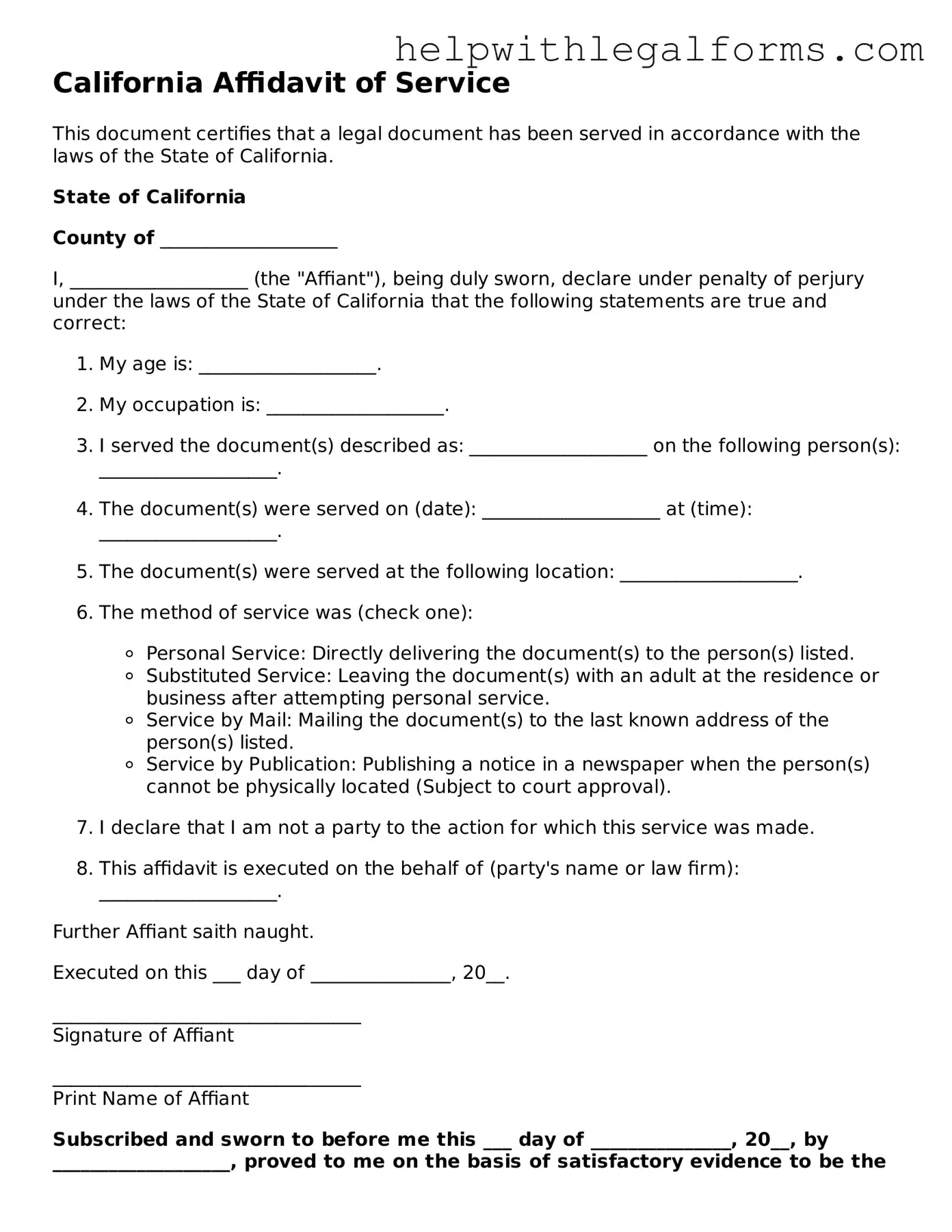California Affidavit of Service
This document certifies that a legal document has been served in accordance with the laws of the State of California.
State of California
County of ___________________
I, ___________________ (the "Affiant"), being duly sworn, declare under penalty of perjury under the laws of the State of California that the following statements are true and correct:
My age is: ___________________.
My occupation is: ___________________.
I served the document(s) described as: ___________________ on the following person(s): ___________________.
The document(s) were served on (date): ___________________ at (time): ___________________.
The document(s) were served at the following location: ___________________.
The method of service was (check one):
- Personal Service: Directly delivering the document(s) to the person(s) listed.
- Substituted Service: Leaving the document(s) with an adult at the residence or business after attempting personal service.
- Service by Mail: Mailing the document(s) to the last known address of the person(s) listed.
- Service by Publication: Publishing a notice in a newspaper when the person(s) cannot be physically located (Subject to court approval).
I declare that I am not a party to the action for which this service was made.
This affidavit is executed on the behalf of (party's name or law firm): ___________________.
Further Affiant saith naught.
Executed on this ___ day of _______________, 20__.
_________________________________
Signature of Affiant
_________________________________
Print Name of Affiant
Subscribed and sworn to before me this ___ day of _______________, 20__, by ___________________, proved to me on the basis of satisfactory evidence to be the person(s) who appeared before me.
_________________________________
Notary Public
My Commission Expires: _______________
